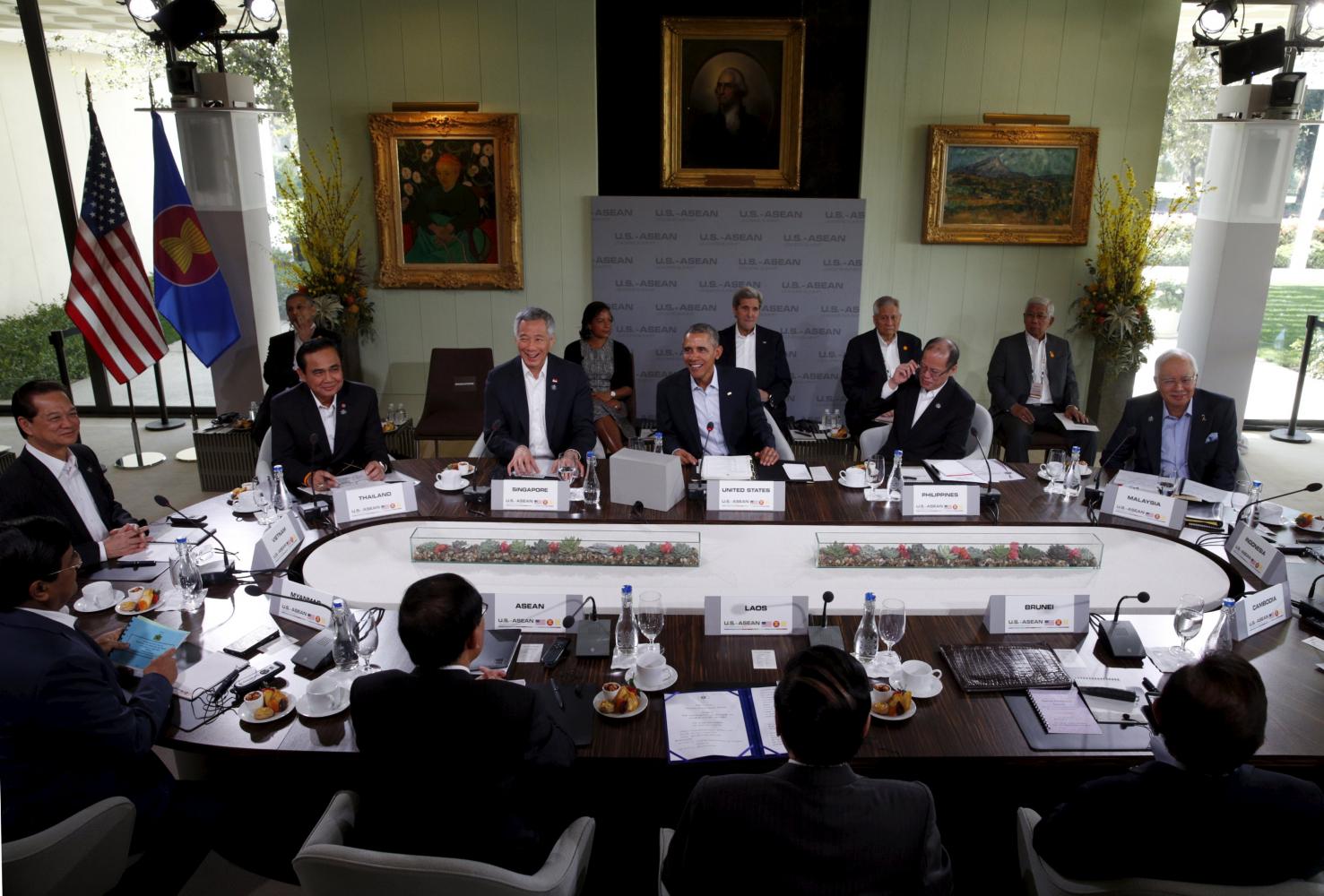
As Southeast Asia's renowned regional bloc, Asean has been wanting to have its cake as well as eat it. Its summit meeting with the United States in Washington this week is a testimony to trying to have it both ways. When Washington cares less about Asean, the nominally 10-member grouping frets about the lack of attention and priority. But when the US cares more, some Asean members are sceptical about its intentions and interests. This summit is likely to show that the US and Asean member states are less in line and increasingly unaligned.
At the initiative of President Joe Biden, this second US-Asean summit being hosted in the United States comes at a time of heightened geopolitical tensions, highlighted by the Russian invasion of Ukraine. It is the second such summit after President Barack Obama presided over the inaugural leaders' meeting in February 2016. Taking place in Sunnylands in California, the first summit was hailed as a solid success in anchoring the US in the Asia-Pacific, with Asean playing a front-and-centre role.
The first summit reinforced the narrative of the US's geostrategic pivot from one ocean to another, from the Atlantic to the Pacific, personalised by Mr Obama's intimate ties to Southeast Asia as he was partly brought up in Indonesia. Global trade winds were blowing in Asia's direction. China was on the rise but not yet as belligerent in the South China Sea and elsewhere as it is today, although Beijing's unilateral maritime build-up of rocks and reefs into military bases had already begun. Europe was largely at peace, although the United Kingdom's referendum to leave the European Union transpired four months later in June 2016.
Benefiting from the continuity of a two-term presidency over eight years from 2009, President Obama and his Southeast Asian counterparts in 2015 upgraded US-Asean ties to a "strategic partnership", which laid the path for the first leaders' summit. This strengthened partnership provided a new framework to bolster bilateral relations. Perhaps the most important outcome of all was Mr Obama's regular attendance at Asean-centred summit meetings in Southeast Asia, clocking countless miles to acknowledge Asean centrality in Asia-Pacific affairs.
When succeeding President Donald Trump practically abandoned regional and multilateral cooperation in favour of transactional and bilateral ties, US-Asean partnership took a downturn. Mr Trump joined Asean-related summits only in 2017, sending his vice president and other deputies thereafter. US-Asean ties became less broad-based and more specific with an overarching objective of pushing back against China.
President Biden is now picking up where his former boss left off and what his former rival left behind, combining the Obama pivot with the Trump Indo-Pacific strategy to constrain China. As with Mr Obama, Mr Biden's own Indo-Pacific strategy privileges Asean centrality, Asean-led mechanisms, the role of the Asean Chair, and the Asean Outlook on the Indo-Pacific. The joint statement in Washington for the second summit is likely to include further implementation of the strategic partnership, post-Covid recovery, digital connectivity, cyber security, climate change, human capital and infrastructure development, among other low-hanging fruits both sides can readily agree on.
But fast-changing times are throwing a spanner in the US-Asean works. Indicative of this trend is the incomplete line-up of Asean leaders at the summit. Philippine President Rodrigo Duterte has opted out because of presidential elections that have just returned a new leader, while Myanmar's contested leadership will not be included. The notion of Asean as a 10-member Southeast Asian bloc no longer holds. The grouping is effectively nine member states as long as Myanmar's post-coup crisis remains unresolved.
In fact, Asean has been broadly split on key fault lines from the US-China rivalry and the Myanmar coup to Russian aggression. On the US-China front, Vietnam, Singapore and the Philippines to a lesser extent have leaned toward the US, whereas Cambodia, Laos and to a lesser degree Brunei have been more supportive of China. This division became salient during Cambodia's chairmanship of Asean in 2012 when the bloc was unable to issue a joint statement due to disagreements over the South China Sea.
In turn, this division has festered over the years and made worse by Myanmar's coup and the ensuing civil war, further splitting Asean as some members called for the restoration of democratic rule with others turned a blind eye. The Russian invasion has accentuated this split, as Laos and Vietnam abstained from the United Nations General Assembly's resolution to condemn the aggression against Ukraine while other Asean members voted for it.
At a time of the US's three-ocean challenge, engaged in the Indo-Pacific but back in the Atlantic to keep the Russians out of Ukraine, the Biden administration will no doubt seek to assuage concerns about US commitment and resolve in its Indo-Pacific strategy. While Washington still has China in its sights, it will likely be consumed by the Russian war in the near future.
On the other hand, Asean wants attention and priority but not questions about human rights and democracy. Certain Asean member states with authoritarian regimes carry on with repression and suppression of dissent while wanting US trade, investment and technology. Washington would like Asean to do something about Myanmar and its heinous military regime but Asean is split down the middle on what to do next after its ineffectual five-point consensus in April 2021 to promote dialogue and reconciliation.
Asean will want President Biden to attend all three Asean-centred leaders' meetings in November, from the Asean-related summits in Cambodia to those of the G20 in Indonesia and Apec in Thailand. But after this face-to-face meeting, it is doubtful whether the 79-year-old US leader will come so far for another in-person meeting, especially if Russian President Vladimir Putin is also invited.
The US-Asean drift requires new thinking about how to cooperate between both sides and within Asean itself. As Asean becomes a nine-member bloc indefinitely, bilateral and mini-lateral approaches for doing things together become necessary.
